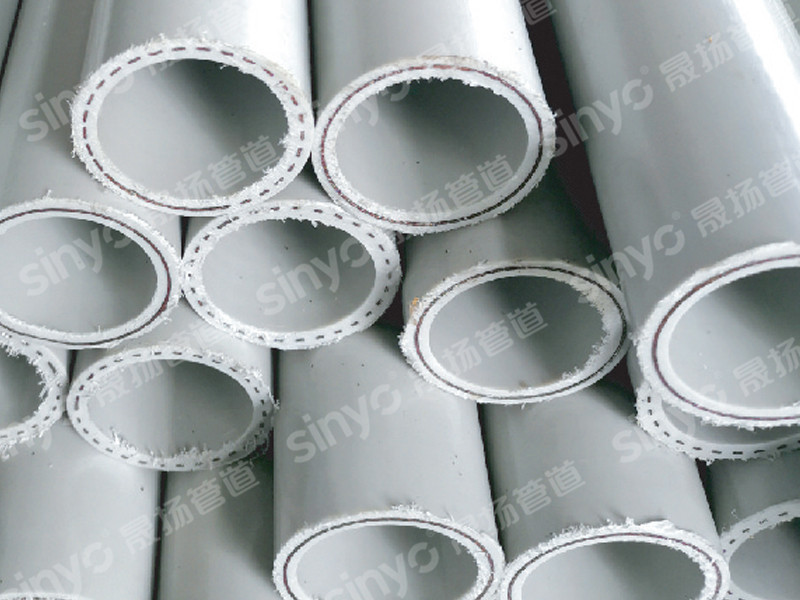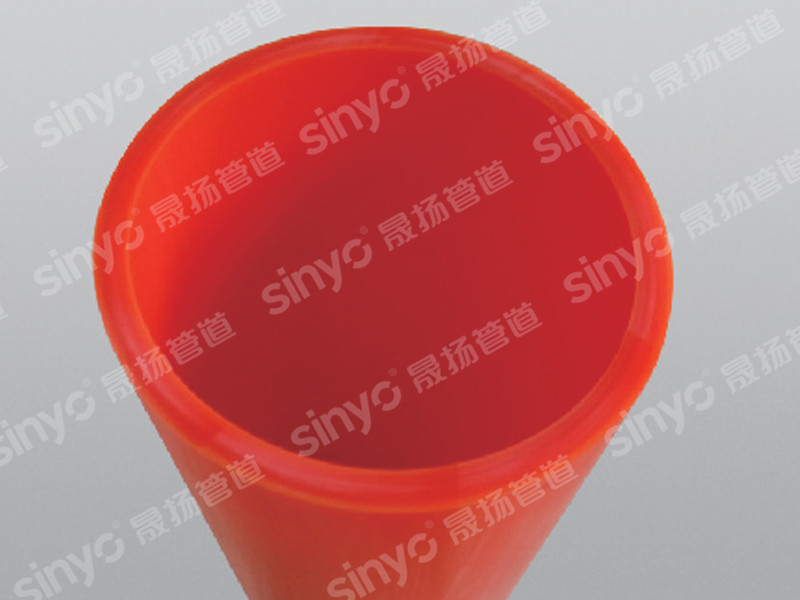Kongwang steel strip polyethylene composite pipe
Kongwang perforated steel belt polyethylene composite pipe is a composite pipe material with a perforated steel pipe welded from cold-rolled steel strip as the reinforcing skeleton and composite thermoplastic plastic. Due to the introduction of the reinforcing skeleton, the pressure resistance of the pipe is significantly improved. Different types and grades of thermoplastic plastics can be used to produce composite pipe materials for different purposes. The perforated steel belt plastic pipes produced by the company are divided into several uses according to their uses: water supply, underground gas, hot water, chemical, and special uses.
Aug 08,2024
Kongwang perforated steel belt polyethylene composite pipe uses cold-rolled steel belt welded perforated pipe as the reinforcing skeleton and composite thermoplastic plastic as the composite pipe material. Due to the introduction of the reinforcing skeleton, the pressure resistance of the pipe is significantly improved. Different types and grades of thermoplastic plastics can be used to produce composite pipe materials for different purposes. The perforated steel belt plastic pipes produced by the company are divided into several uses according to their uses: water supply, underground gas, hot water, chemical, and special uses.
Product Features
• High pressure resistance and creep resistance.
• Good ring stiffness and impact resistance.
• Low coefficient of linear expansion and thermal conductivity.
• Good corrosion resistance and wear resistance.
• Light weight, easy transportation and construction.
• Good hygiene.
• Smooth inner wall, no scaling, head loss is 30% lower than steel pipe.
Water Supply
The water supply perforated steel belt plastic composite pipeline system uses imported PE80 or PE100 grade materials, manufactured according to enterprise standards, with good weldability, resistance to environmental stress cracking and resistance to rapid cracking, and its performance indicators exceed those of pure PE water supply pipes.
• Long service life, up to 50 years under normal conditions.
• Good hygiene, solves the problem of secondary pollution of drinking water, and meets the safety evaluation regulations of GB/T17219-1998.
• Smooth inner wall, low water flow resistance, head loss is 30% lower than steel pipe.
• Light weight, easy to handle.
• Easy construction, simple welding process, low overall project cost. The pipe material color is white, black or color agreed by both parties.
The gas-use perforated steel belt plastic composite pipeline system uses imported PE80 or PE100 materials, manufactured according to enterprise standards, with good weldability, resistance to environmental stress cracking and resistance to rapid cracking, and its applicable performance indicators exceed those of pure PE gas pipes.
Advantages
• Service life up to 50 years
• Light weight
• Easy construction
• Less earthwork
• Strong corrosion resistance
• Low transportation costs
• Good pipe traceability
• The color of pipes and fittings is yellow, white or black.
Previous:
Related News
Kongwang steel strip polyethylene composite pipe
Kongwang perforated steel belt polyethylene composite pipe is a composite pipe material with a perforated steel pipe welded from cold-rolled steel strip as the reinforcing skeleton and composite thermoplastic plastic. Due to the introduction of the reinforcing skeleton, the pressure resistance of the pipe is significantly improved. Different types and grades of thermoplastic plastics can be used to produce composite pipe materials for different purposes. The perforated steel belt plastic pipes produced by the company are divided into several uses according to their uses: water supply, underground gas, hot water, chemical, and special uses.
Development prospects of large-diameter (large-caliber) pressure pipes
The application of plastic pipes, both domestically and internationally, started with smaller diameters and gradually developed towards larger diameters. (There is no defined definition for large diameter; in this article, large diameter refers to diameters of 800mm and above.) It is worth noting that in recent years, there has been a major international trend towards the development of large-diameter plastic pipes, driven by environmental protection. As is well known, the world is currently facing a battle against climate change, and all countries must bear the responsibility of reducing carbon emissions. In the pipeline industry, there is undoubtedly a need to pay more attention to environmental impact.



